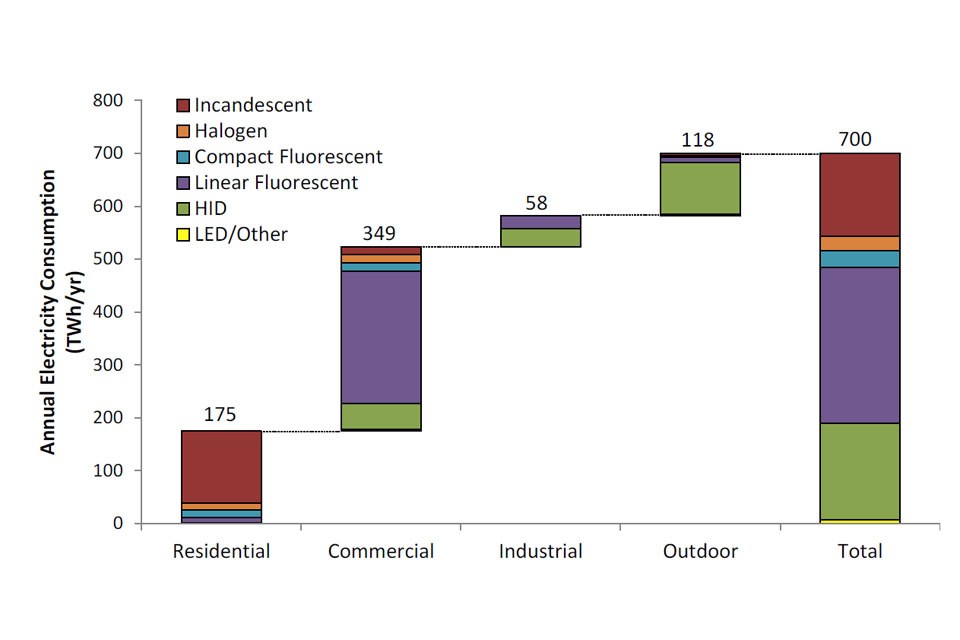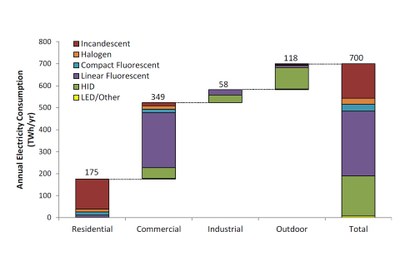DOE Report Characterizes 2010 US Lighting Market
The U.S. Department of Energy (DOE) has released a report detailing the characteristics of the U.S. lighting market by technology and sector, which helps chart progress made toward the goal of transitioning to more efficient white-light source technologies. The 2010 U.S. Lighting Market Characterization provides comprehensive and detailed estimates of the national inventory of installed lamps as well as their performance characteristics, associated energy use, and lumen production. It focuses on four sectors: residential buildings, commercial buildings, industrial buildings, and outdoor.
It was found that in 2010, lighting accounted for approximately 700 terawatt-hours (TWh), or roughly 19 percent of the country’s total electricity use:
- Nearly half of that energy use (349 TWh) came from the commercial sector, which was dominated by fluorescent lighting.
- Although the residential sector (175 TWh) contained far more installed lamps (nearly 6 billion, compared with just over 2 billion commercial lamps), most of them incandescent, these residential lamps did not see nearly as much daily use, on average, as did commercial-sector lamps.
The new report is an update to a similar DOE report that modeled the 2001 U.S. lighting market inventory. During the intervening decade, two overarching trends emerged:
- Push toward higher-efficacy lighting. Investment in more energy-efficient technologies, federal and state lighting regulations, and public awareness campaigns helped shift the market toward more energy-efficient lighting technologies across all sectors. The average system efficacy of installed lighting increased from 45 lumens per watt in 2001 to 58 lumens per watt in 2010, due mainly to a move from incandescent to compact fluorescent lamps in the residential sector, and from T12 to T8 and T5 fluorescent lamps in the commercial and industrial sectors.
- Increased demand for light. The total number of lamps installed in U.S. stationary applications grew from just under 7 billion in 2001 to more than 8 billion in 2010. Most of this growth occurred in the residential sector, primarily due to the increase in the number of households (from just under 107 million in 2001 to more than 113 million in 2010) and the rise in the number of sockets per household (from 43 to 51).
For more information, download the 2010 US Lighting Market Characterization Report or visit www.ssl.energy.gov/tech_reports.html.


